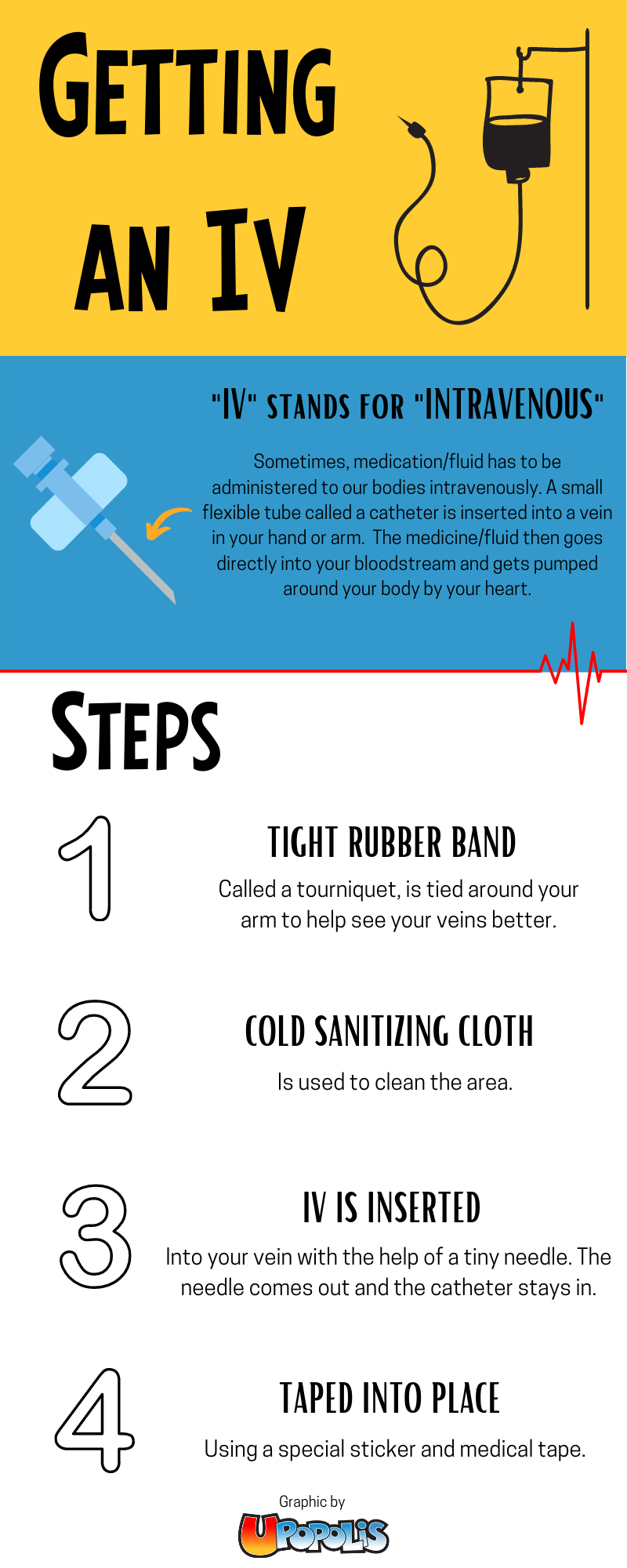Intravenous (IV)
 Let’s talk about getting an IV. Sometimes, medications or fluids have to be administered to our body by an intravenous. This is a small flexible tube (picture attached below), called a catheter, that gets inserted into a vein that’s usually in the top of your hand or in your arm, which gets connected to a tube that medicine or fluid flows into. This allows it to go directly into your bloodstream and get pumped around your body by your heart.
Let’s talk about getting an IV. Sometimes, medications or fluids have to be administered to our body by an intravenous. This is a small flexible tube (picture attached below), called a catheter, that gets inserted into a vein that’s usually in the top of your hand or in your arm, which gets connected to a tube that medicine or fluid flows into. This allows it to go directly into your bloodstream and get pumped around your body by your heart.
This process starts with having a tight rubber band tied around your upper arm, because this helps the nurse to see your veins better. Some nurses also like to wrap your hands with a warm towel for this reason. Then they will clean the area that the IV will be inserted into with a cold sanitizing cloth. Next is inserting the IV, but because its a small flexible tube (some say it looks like a tiny bendy straw), it won’t go into your skin on its own. There is a small helper needle that helps the IV to get into your vein. Once the nurse inserts it properly, they click a button, the needle comes out, and the straw stays in. The last step is to tape the IV in place using stickers and tape. Now that it’s in place, the nurse will attach a long tube to the catheter that medicine or fluid will flow into. Some kids say it feels a bit cold at first when the medicine/fluid enters their body.
NOTE: Specific steps may vary between hospitals, clinics, and even healthcare professionals. This is meant you give you a general idea of what getting an IV involves.
Discussion (0)
There are no comments for this doc yet.
Comment posting has been disabled on this doc.